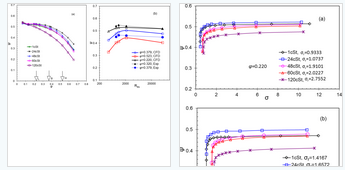information
INFORMATIONHOTLINE
+86-0531-85667509T e l:+86-0531-85667509
F a x:86-0531-85667508
E-mai:warwickpump@gmail.com
Technology article
Modeling Viscous Oil Cavitating Flow in a Centrifugal Pump
Properly modeling cavitating flow in a centrifugal pump is a very important issue for prediction of cavitation performance in pump hydraulic design optimization and application. As a first trial, the issue is explored by using computational fluid dynamics (CFD) method plus the full cavitation model herein. To secure a smoothed head-net positive suction head available (NPSHa) curve, several critical techniques are adopted. The cavitation model is validated against the experimental data in literature. The predicted net positive suction head required (NPSHr) correction factor for viscosity oils is compared with the existing measured data and empirical correlation curve, and the factor is correlated to impeller Reynolds number quantitatively. A useful relation between the pump head coefficient and vapor plus noncondensable gas-to-liquid volume ratio in the impeller is obtained. Vapor and noncondensable gas concentration profiles are illustrated in the impeller, and a “pseudocavitation” effect is confirmed as NPSHa is reduced. The effects of exit blade angle on NPSHr are presented, and the contributions of liquid viscosity and noncondensable gas concentration to the increase of NPSHr at a higher viscosity are identified.


